Hildegard von Bingen (1098-1179) Germany
Much has been written about this remarkable woman. She has been and continues to be studied by scholars in diverse fields that include spirituality, theology, music, medicine, herbalism, and illumination (illustration). She was also a visionary and prophet. Hildegard had the intellect and the opportunity to address her numerous talents to all these fields. I will attempt to give you some idea of her life with an emphasis on her interest in medicine and herbalism.
Hildegard was the 10th child born to a noble family. Traditionally the 10th child is given to the church as tithe, and so at the age of 8 Hildegard was sent to the Benedictine monastery of Disibodenburg in Bingen for her religious upbringing (this was a double monastery with male and female sections). There she was entrusted to the anchoress Jutta for her education.
From a very young age it had been apparent that Hildegard had prophetic visions. These were often recorded by Jutta and later by a scribe Volmar. Today, it is suggested that the visions were caused by migraines.
Hildegard refered to Jutta as an “unlearned woman” and while Jutta taught the young girl to read and write Hildegard may have taken it upon herself to educate herself. The Benedictines believed that both men and women should have access to learning. They followed a tradition of community where all members were expected to participate in prayer, reading and work. Music was part of their lives as was the making and illustrating of manuscripts. This lifestyle would have been the greatest influence on a young Hildegard.
Upon the death of Jutta, Hildegard then 38, was named Prioress by her fellow sisters. Hildegard moved the convent from Bingen to the St. Rupertsberg monastery in 1150. In 1165 she founded a second convent in Eibingen.
A major turning point in her life took place at the age of 42 when she received a vision from God (as they all were) to begin writing down her visions.
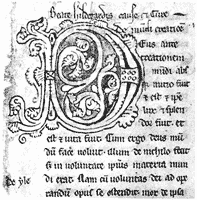 |
| Opening lines of Causae et Curae |
In her lifetime she wrote between 70 and 80 musical compositions, 72 songs, 70 poems, 100 letters and 9 books. Hildegard wrote 2 books on medicine, Physica and Causae et Curae. Physica, written in nine parts, describes the characteristics of elements, birds, fish, mammals, reptiles, trees and plants, and precious stones and metals. It details the medicinal uses of more than 200 herbs and plants with some descriptions for identification. Causae et Curae combines the mystical beliefs of the time with early German folklore and Hildegard’s own herbal experience. It lists more than 200 diseases with information on their causes, symptoms and treatments. In this same book Hildegard also lists 300 plants, with medical and physiological theory as well as herbal treatments. While both books list herbal treatments, the latter includes actual proportions for the ingredients in the recipe.
It is believed Hildegard would have read and used older texts on medieval herbs, and presumably worked in the gardens at Disibodenberg and St. Rupertsberg. It is not known if she practiced medicine, but she was well known for her cures, both supernatural and natural. Some are still used today. These two books would have been written for use by the nuns of the convent. Their use would not only be of immense benefit to sick or ailing nuns and monks, but would also provide medical aid to travelers and the people of nearby communities who turned to the monasteries for help.
There are many books and websites devoted to her for those of you who want to delve deeper into certain aspects of her life.
This is I’m afraid, only a tiny sliver of the information on Hildegard of Bingen.
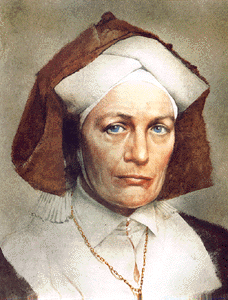

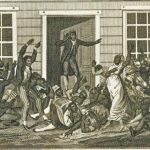
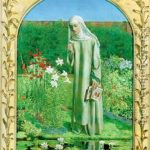
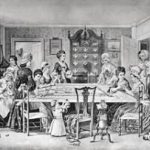
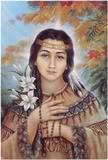
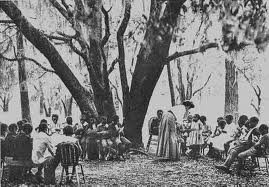
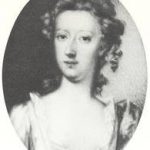
Dear Patty, I love these little snippets that you give into the lives of these remarkable women. Hildegard was indeed a woman of great intellect and creativity and It is quite amazing that so much of her work continues to be known and used today.
Dear Patty – this is a very interesting post.
How can I find a print of that oil portrait of Hildegard? Do you have any knowledge about it?
I would love to get a copy for my classroom next year.